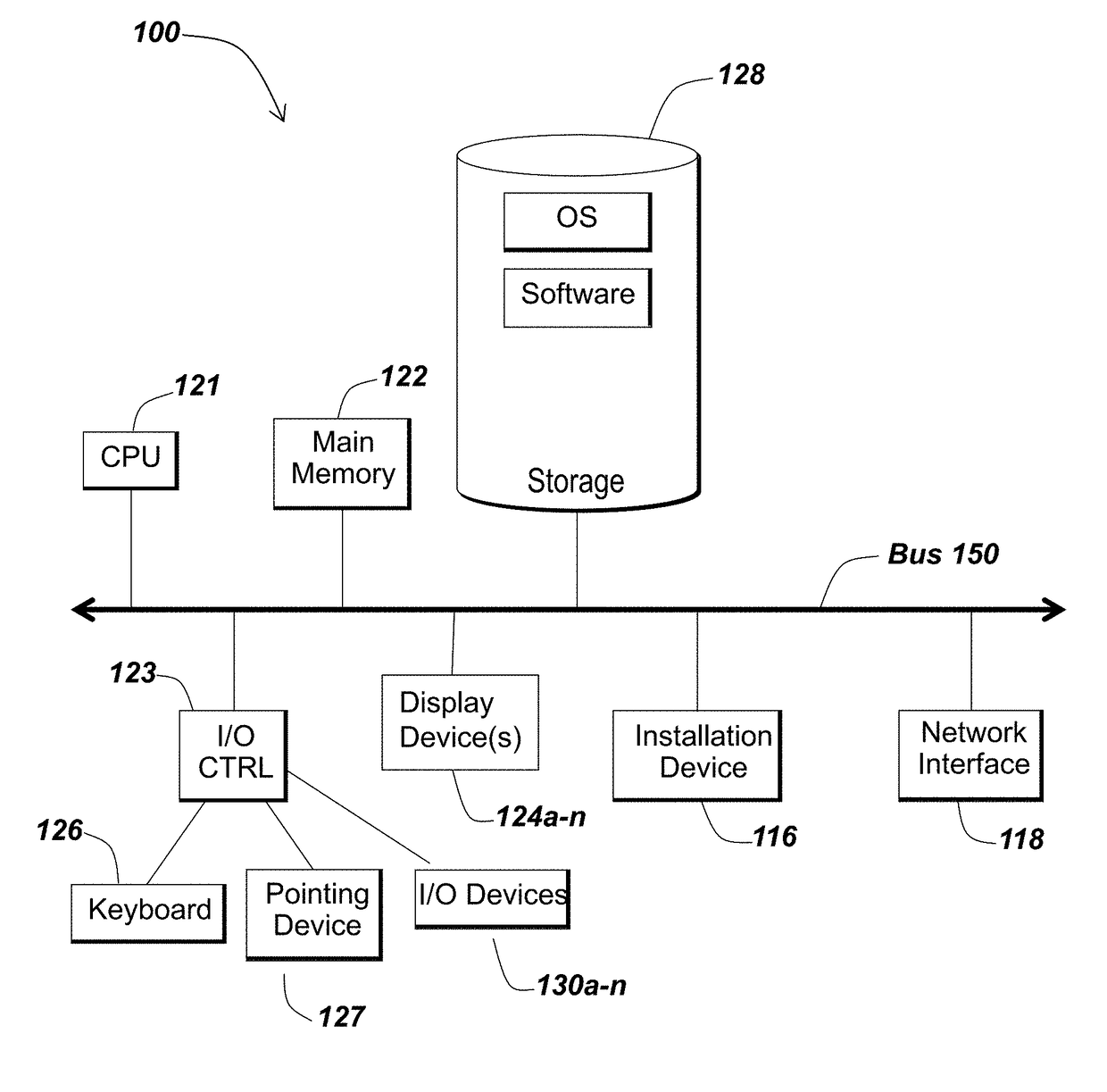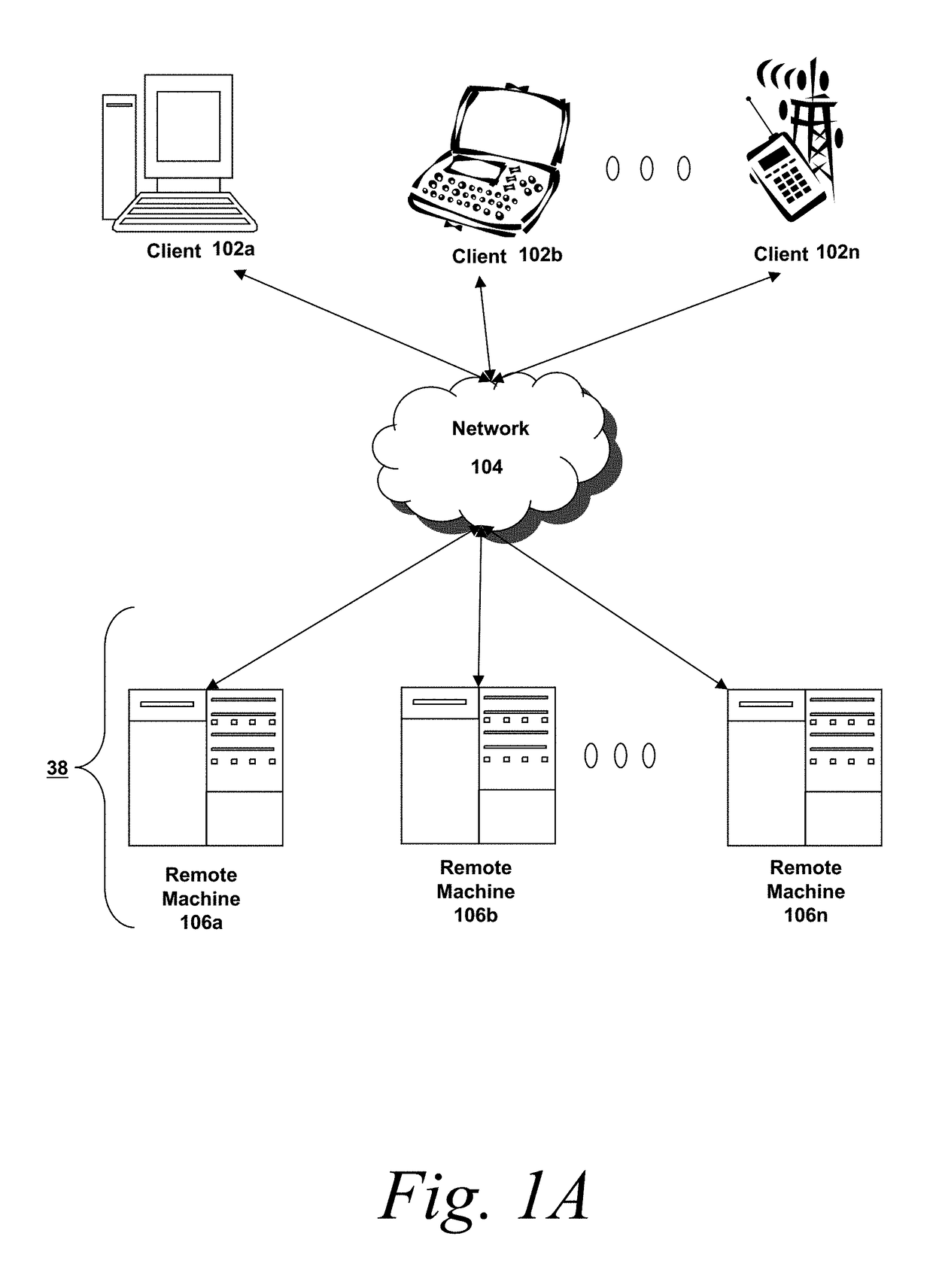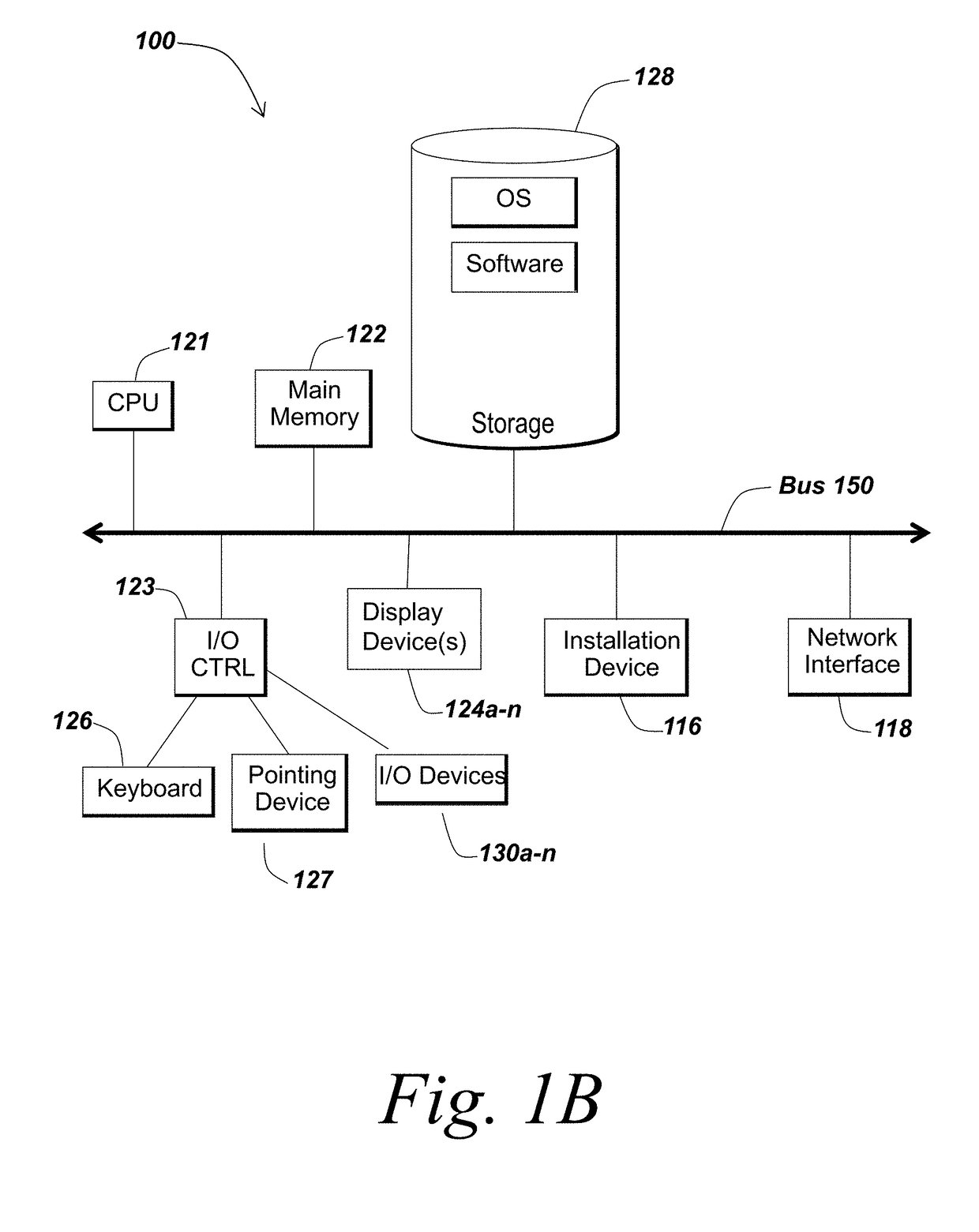Methods and Systems for Stream-Processing of Biomedical Data
a biomedical data and stream processing technology, applied in the field of data processing, can solve the problems of enormous growth in the size of biomedical data sets, bottlenecks, and inability to download, store, analyze common genomic data sets for individual researchers,
- Summary
- Abstract
- Description
- Claims
- Application Information
AI Technical Summary
Benefits of technology
Problems solved by technology
Method used
Image
Examples
Embodiment Construction
[0013]In some embodiments, the methods and systems described herein provide functionality for stream-processing biomedical data. Before describing these methods and systems in detail, however, a description is provided of a network in which such methods and systems may be implemented.
[0014]Referring now to FIG. 1A, an embodiment of a network environment is depicted. In brief overview, the network environment comprises one or more clients 102a-102n (also generally referred to as local machine(s) 102, client(s) 102, client node(s) 102, client machine(s) 102, client computer(s) 102, client device(s) 102, computing device(s) 102, endpoint(s) 102, or endpoint node(s) 102) in communication with one or more remote machines 106a-106n (also generally referred to as server(s) 106 or computing device(s) 106) via one or more networks 104.
[0015]Although FIG. 1A shows a network 104 between the clients 102 and the remote machines 106, the clients 102 and the remote machines 106 may be on the same ...
PUM
 Login to View More
Login to View More Abstract
Description
Claims
Application Information
 Login to View More
Login to View More - R&D
- Intellectual Property
- Life Sciences
- Materials
- Tech Scout
- Unparalleled Data Quality
- Higher Quality Content
- 60% Fewer Hallucinations
Browse by: Latest US Patents, China's latest patents, Technical Efficacy Thesaurus, Application Domain, Technology Topic, Popular Technical Reports.
© 2025 PatSnap. All rights reserved.Legal|Privacy policy|Modern Slavery Act Transparency Statement|Sitemap|About US| Contact US: help@patsnap.com



